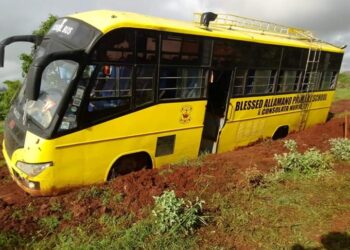The Competency-Based Curriculum (CBC) in Kenya has restructured the educational system to emphasize skills, competencies, and values alongside academic knowledge. Here’s a detailed breakdown based on your input:
CBC Curriculum Structure
- 2 Years – Early Childhood Development Education (ECDE)
- 3 Years – Lower Primary (Grades 1 to 3)
- 3 Years – Upper Primary (Grades 4 to 6)
- 3 Years – Junior School (JSS – Grades 7 to 9)
- 3 Years – Senior School (SS – Grades 10 to 12)
- 3 Years – University and other Tertiary Colleges
Pathways After Junior School:
At the end of Junior School (Grade 9), students are placed into one of three pathways based on their performance and interest:
- STEM (Science, Technology, Engineering, Mathematics) -The government aims for 60% of students to pursue this path due to the perceived opportunities in these fields.
- Sciences
- Technology
- Engineering
- Mathematics
- Social Sciences
- Law
- Teaching
- Journalism
- Creative Arts & Sports
- Music, Drama, Theatre Arts
- All sports disciplines
- Comedy and the creative industry
Placement and Assessment
- Kenya Early Year Assessment (KEYA) starts at Grade 3, marking the beginning of formal assessments by KNEC.
- From Grades 4 and 5, there are ongoing school-based assessments which contribute to the final assessment at Grade 6, known as the Kenya Primary School Education Assessment (KPSEA). This assessment helps in the placement into Junior Schools.
- Performance Indicators at Junior School level will influence the placement into Senior Schools where each school will offer at least two of the three pathways. The clustering of Senior Schools is still in process, which means the availability and specialization of schools might evolve over time.
Advice for Students and Parents
- STEM Focus: Given the government’s push for more students in STEM, there might be more resources and opportunities in these areas. However, it’s crucial to consider the student’s interests and capabilities, not just the potential job market.
- Holistic Development: Even if a student is placed in STEM, engaging in activities from the other pathways can foster a well-rounded individual, enhancing creativity, social skills, and physical health.
- Future Adaptability: The educational landscape is dynamic; pathways might evolve, so adaptability and lifelong learning should be encouraged.
- Early Guidance: Discuss with children early about their interests to guide them towards a pathway that suits them best, keeping in mind the assessments and performance indicators that will influence their educational journey.
This new curriculum structure aims at producing learners who are not only academically competent but also prepared to solve real-world problems, adapt to technological changes, and contribute to society in various capacities.
CBC Pathways and Benefits
The pathways introduced in the Competency-Based Curriculum (CBC) in Kenya offer numerous benefits aimed at enhancing education quality, student engagement, and preparation for the future workforce. Here are the key benefits:
1. Personalization of Education
- Tailored Learning: Each pathway allows students to pursue education in areas that align with their interests and strengths, fostering a more personalized learning experience. This can lead to higher engagement and satisfaction in education.
2. Skill Development
- Specialization: Students can delve deeper into subjects within their chosen pathway, gaining specialized knowledge and skills that are directly applicable to future careers. For example, the STEM pathway can lead to skills in critical thinking, problem-solving, and technical proficiency.
- Competency Focus: The curriculum emphasizes developing competencies over rote learning, preparing students with practical, real-world skills. This includes digital literacy, creativity, and collaboration, which are crucial in today’s job market.
3. Career Preparation
- Direct Career Pathways: Each pathway is designed to lead directly into various career fields, providing clearer career trajectories. For instance, the Social Sciences pathway opens doors to professions like law, teaching, and journalism.
- Increased Opportunities: By focusing on areas with high demand, such as STEM, students are better positioned to enter lucrative and growing job markets. The government’s push for 60% of students in STEM reflects an understanding of future job market needs.
4. Inclusivity and Equity
- Diverse Pathways: Offering multiple pathways ensures that education is not one-size-fits-all, thereby accommodating diverse talents and learning styles. This inclusivity can help reduce dropout rates by engaging students in subjects they are passionate about.
- Special Needs Considerations: The curriculum includes pathways for learners with special needs, ensuring inclusivity and that all students can benefit from education tailored to their abilities.
5. Cultural and Creative Enhancement
- Arts and Sports: The Creative Arts & Sports pathway not only nurtures talent in these areas but also integrates life skills, ethics, and community service, contributing to holistic development.
6. Flexibility and Lifelong Learning
- Adaptability: Students learn to adapt to different learning environments and subjects, promoting lifelong learning attitudes. This flexibility can be crucial in a rapidly changing world where career pivots are common.
- Interdisciplinary Learning: Exposure to different subjects within a pathway can encourage interdisciplinary thinking, which is valuable in solving complex problems.
7. Community and Personal Development
- Engagement with Real-World: Through community service learning, which is core across all pathways, students connect with society, applying their learning in practical settings, which enhances personal growth and civic responsibility.
- Self-Efficacy: By mastering skills in areas they are passionate about, students gain confidence and a sense of self-efficacy, preparing them for life beyond school.
8. Economic and National Development
- Alignment with National Goals: The pathways are designed to align with Kenya’s developmental goals, potentially leading to a more skilled workforce that can contribute to national economic growth and innovation.
By offering these pathways, the CBC in Kenya aims to cultivate a generation of learners who are not only academically proficient but also equipped with the skills, values, and attitudes necessary for personal and professional success in a globalized world.















